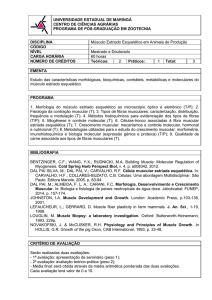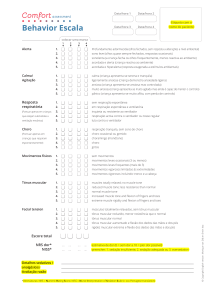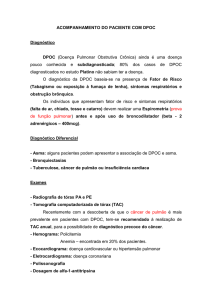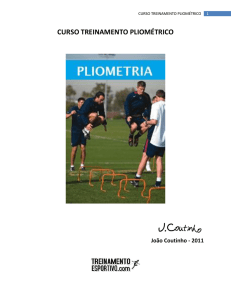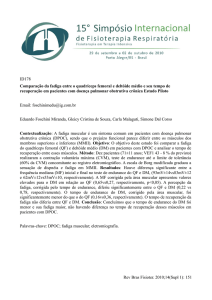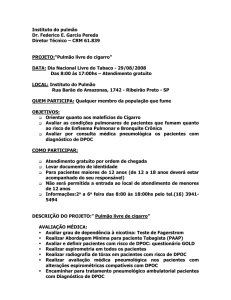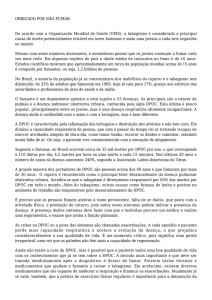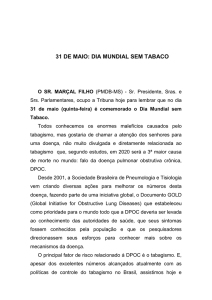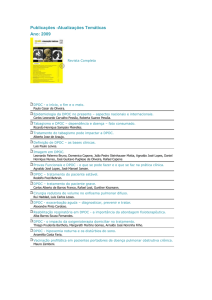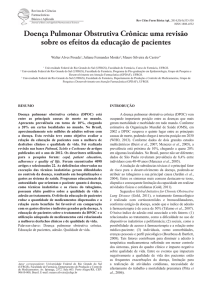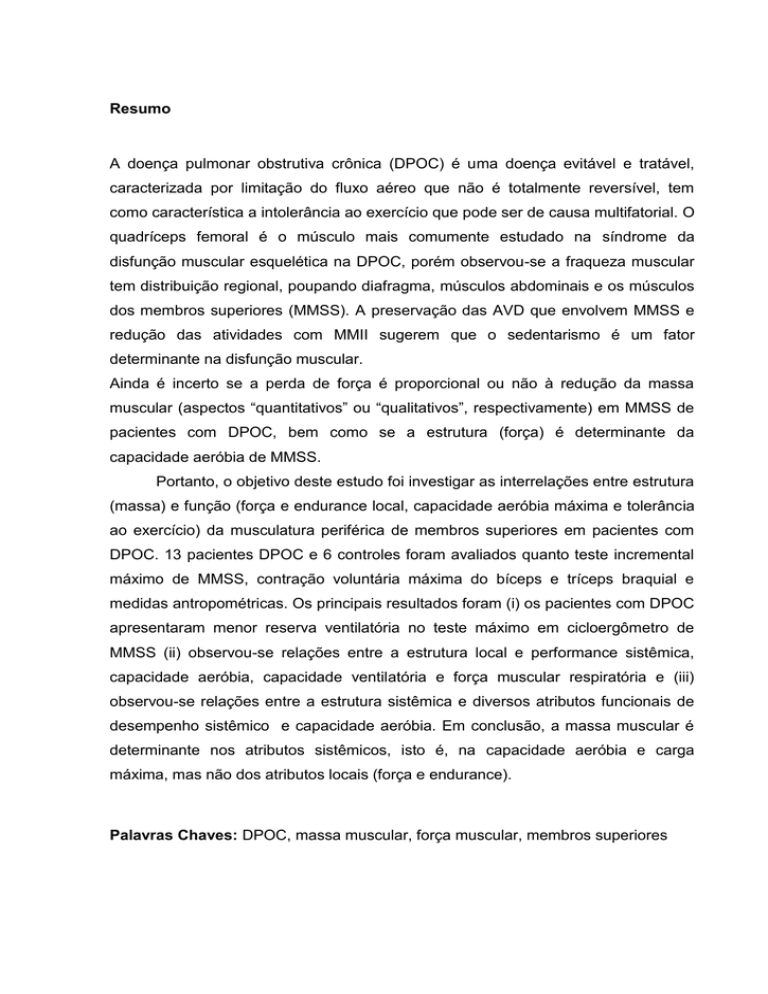
Resumo
A doença pulmonar obstrutiva crônica (DPOC) é uma doença evitável e tratável,
caracterizada por limitação do fluxo aéreo que não é totalmente reversível, tem
como característica a intolerância ao exercício que pode ser de causa multifatorial. O
quadríceps femoral é o músculo mais comumente estudado na síndrome da
disfunção muscular esquelética na DPOC, porém observou-se a fraqueza muscular
tem distribuição regional, poupando diafragma, músculos abdominais e os músculos
dos membros superiores (MMSS). A preservação das AVD que envolvem MMSS e
redução das atividades com MMII sugerem que o sedentarismo é um fator
determinante na disfunção muscular.
Ainda é incerto se a perda de força é proporcional ou não à redução da massa
muscular (aspectos “quantitativos” ou “qualitativos”, respectivamente) em MMSS de
pacientes com DPOC, bem como se a estrutura (força) é determinante da
capacidade aeróbia de MMSS.
Portanto, o objetivo deste estudo foi investigar as interrelações entre estrutura
(massa) e função (força e endurance local, capacidade aeróbia máxima e tolerância
ao exercício) da musculatura periférica de membros superiores em pacientes com
DPOC. 13 pacientes DPOC e 6 controles foram avaliados quanto teste incremental
máximo de MMSS, contração voluntária máxima do bíceps e tríceps braquial e
medidas antropométricas. Os principais resultados foram (i) os pacientes com DPOC
apresentaram menor reserva ventilatória no teste máximo em cicloergômetro de
MMSS (ii) observou-se relações entre a estrutura local e performance sistêmica,
capacidade aeróbia, capacidade ventilatória e força muscular respiratória e (iii)
observou-se relações entre a estrutura sistêmica e diversos atributos funcionais de
desempenho sistêmico e capacidade aeróbia. Em conclusão, a massa muscular é
determinante nos atributos sistêmicos, isto é, na capacidade aeróbia e carga
máxima, mas não dos atributos locais (força e endurance).
Palavras Chaves: DPOC, massa muscular, força muscular, membros superiores
Abstract
Chronic obstructive pulmonary disease (COPD) is a preventable and treatable
disease characterized by airflow limitation that is not fully reversible. COPD is also
characterized by exercise intolerance which can be caused by multiple factors.
Quadriceps femoris is the most commonly muscle studied in skeletal muscle
dysfunction syndrome in COPD. However, it has been speculated a regional
distribution of muscle weakness preserving diaphragm, abdominal muscles and
muscles of the upper limbs (UL).
It is unclear whether the loss of strength is proportional or not to the reduced muscle
mass ("quantitative" or "qualitative" aspects, respectively) in UL of patients with
COPD, as well as the structure (strength) is a determinant of UL aerobic capacity.
The aim of this study was to investigate the relationships between structure (muscle
mass) and function (strength and local endurance, maximal aerobic capacity and
exercise tolerance) of the peripheral muscles of UL in patients with COPD. Thirteen
COPD patients and 6 controls were evaluated for UL maximal incremental test,
maximal voluntary contraction of the biceps and triceps and anthropometric
measurements. The main results were (i) patients with COPD had lower ventilatory
reserve at maximal test on UL cycle ergometer (ii) there was a relationship between
the local structure (muscle mass) and systemic performance (aerobic capacity,
ventilatory demand and respiratory muscle strength) and (iii) it was observed
relationship between system structure and several functional attributes of system
performance and aerobic capacity. In conclusion, muscle mass is crucial in systemic
attributes, ie, aerobic capacity and maximum workload, but not the local attributes
(strength and endurance).
Keywords: COPD, muscle mass, muscle strength, upper limbs.

